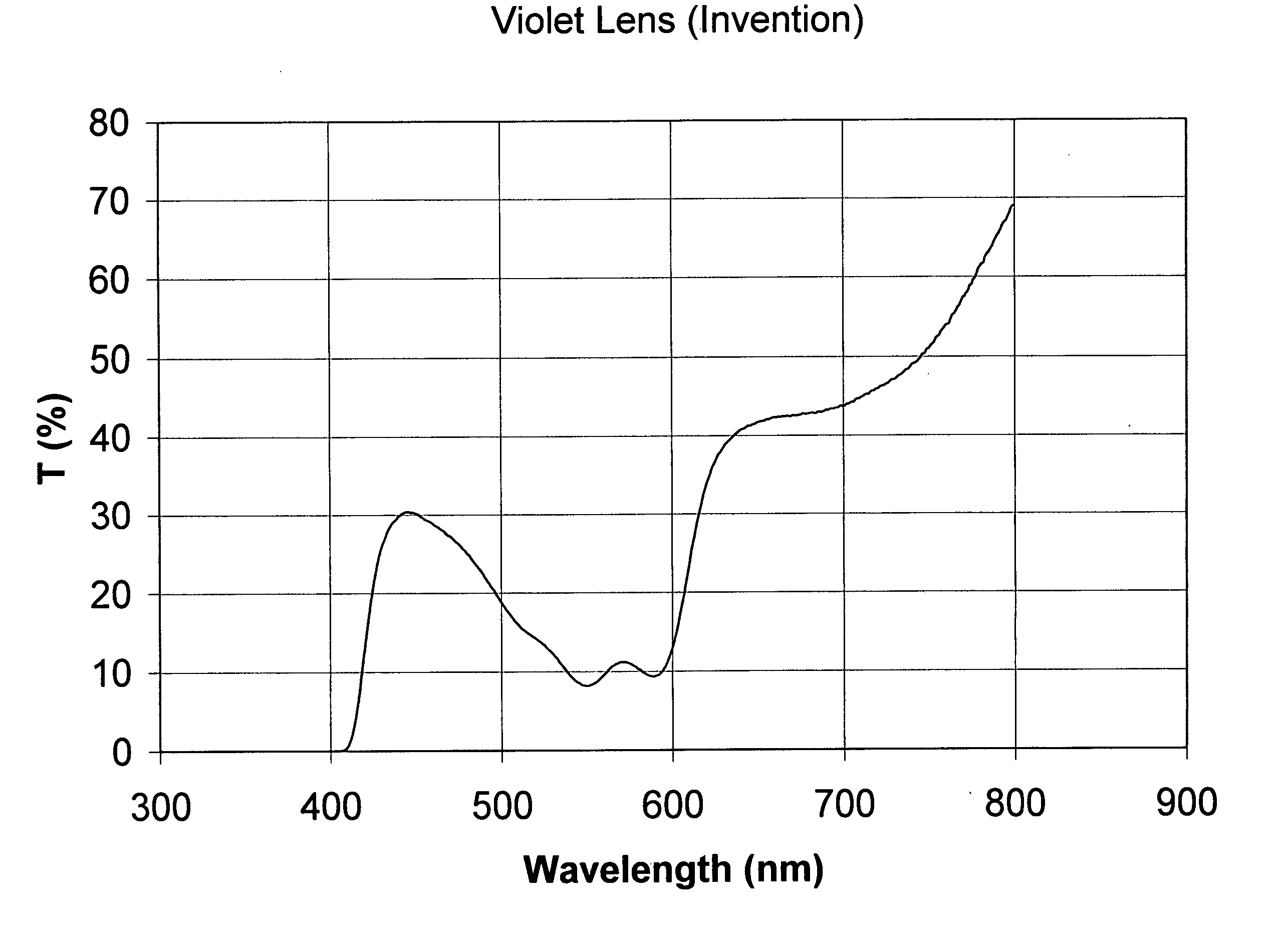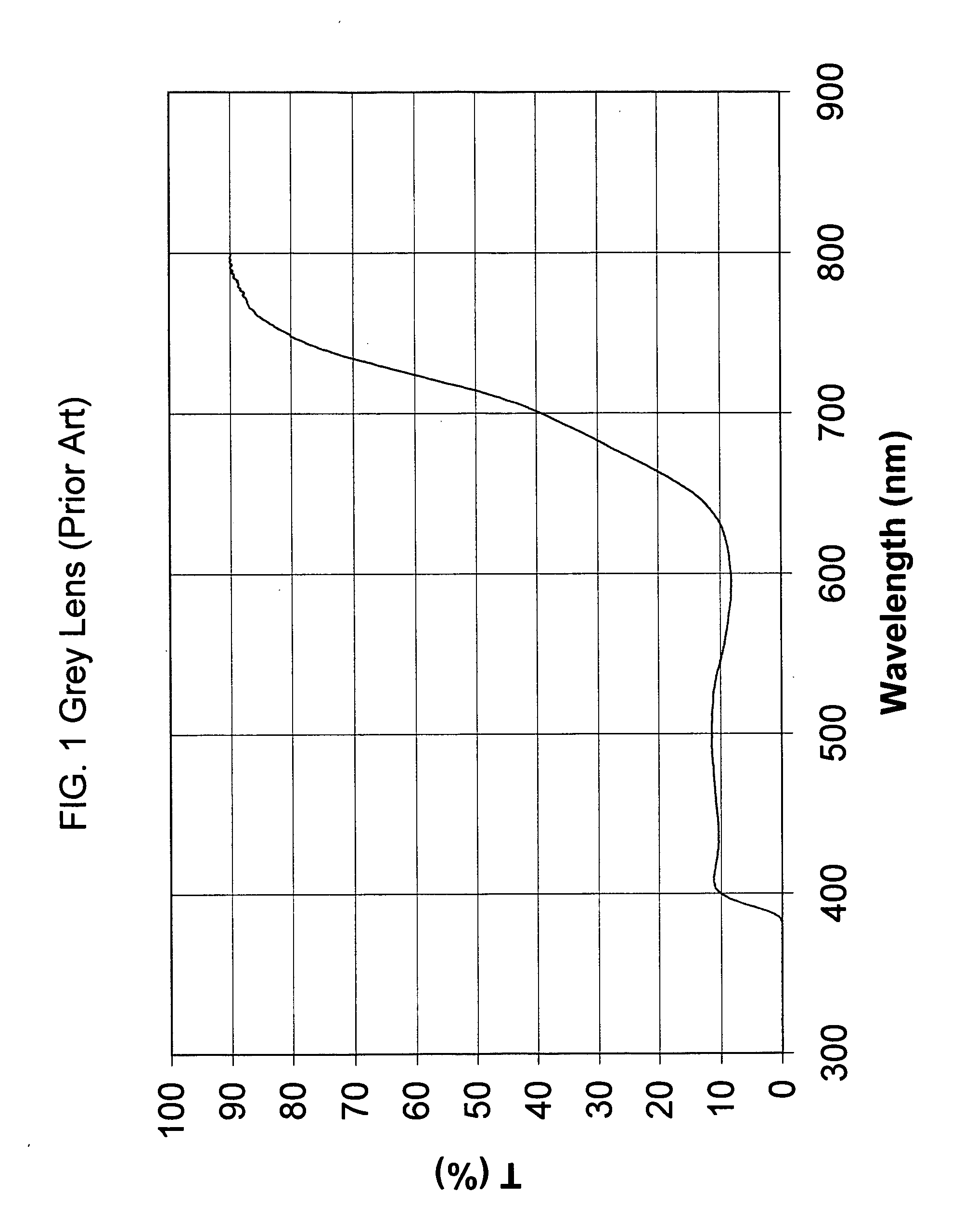Polarized optical elements enhancing color contrast and methods for their manufacture
a technology of color contrast and optical elements, applied in the field of polarized optical elements, can solve the problems of conventional optical elements, sunglass lenses, and inability to effectively reduce the effects of glare, and achieve the effects of enhancing visual acuity, reducing glare, and increasing red sensitivity
- Summary
- Abstract
- Description
- Claims
- Application Information
AI Technical Summary
Benefits of technology
Problems solved by technology
Method used
Image
Examples
example 1
(Prior Art)
[0165] A polarized lens made of diethylenglycol-bis-allyl-carbonate (CR39®) was obtained by means of a casting method comprising placing a polarizing disc made of a polyvinylalcohol film 30 microns thick (Kurarai, JP) preformed to have a substantially spherical surface in a cavity formed by molds having concave and convex inner surfaces. A solution of transparent polymerizable diethylenglycol-bis-allyl-carbonate monomer including 3% of cross-linking catalyst (diisopropyl peroxy dicarbonate) and 0.3% of UV absorber Uvinul® 3049 (BASF) was then poured on opposite sides of the polarizing film and then polymerized. The polymerization cycle lasted 20 hours and the temperature was adjusted between 40° and 80° C. according to polymerization procedures well known to those skilled in the art.
[0166] The polarized lens thus obtained was dyed by means of a thermal transfer technique in liquid phase. To this end, a dyeing bath was prepared comprising an aqueous solution including: 0...
example 2
(Prior Art)
[0168] A polarized lens was manufactured by injection molding of a polycarbonate resin onto a polarizing curved disc made of a polyvinylalcohol (PVA) film sandwiched between two layers of polycarbonate. The total thickness of the film is 0.4 mm. The resin was dyed in bulk by incorporating the following Soluble dyes: 0,020% Solvent Blue 128, 0.015% Solvent Red 52, 0.01% Solvent Yellow 114. 0.2% of Tinuvin 326 (CIBA) as UV absorber was also incorporated into the resin.
[0169] The curve of spectral transmittance obtained is the curve of a brown lens and is shown in FIG. 2.
example 3
(Prior Art)
[0170] A polarized lens was manufactured by bonding at a temperature of 90° C. and at a pressure of 7 bar in an autoclave a polyamide lens made by Trogamid® (Degussa) dyed in bulk with the same Soluble dyes of the Example 2 onto a curved disc of polarizing film made of PVA bonded onto a layer of Cellulose Triacetate film.
[0171] The curve of spectral transmittance obtained is the curve of a copper lens and is shown in FIG. 3.
PUM
 Login to View More
Login to View More Abstract
Description
Claims
Application Information
 Login to View More
Login to View More - R&D
- Intellectual Property
- Life Sciences
- Materials
- Tech Scout
- Unparalleled Data Quality
- Higher Quality Content
- 60% Fewer Hallucinations
Browse by: Latest US Patents, China's latest patents, Technical Efficacy Thesaurus, Application Domain, Technology Topic, Popular Technical Reports.
© 2025 PatSnap. All rights reserved.Legal|Privacy policy|Modern Slavery Act Transparency Statement|Sitemap|About US| Contact US: help@patsnap.com



